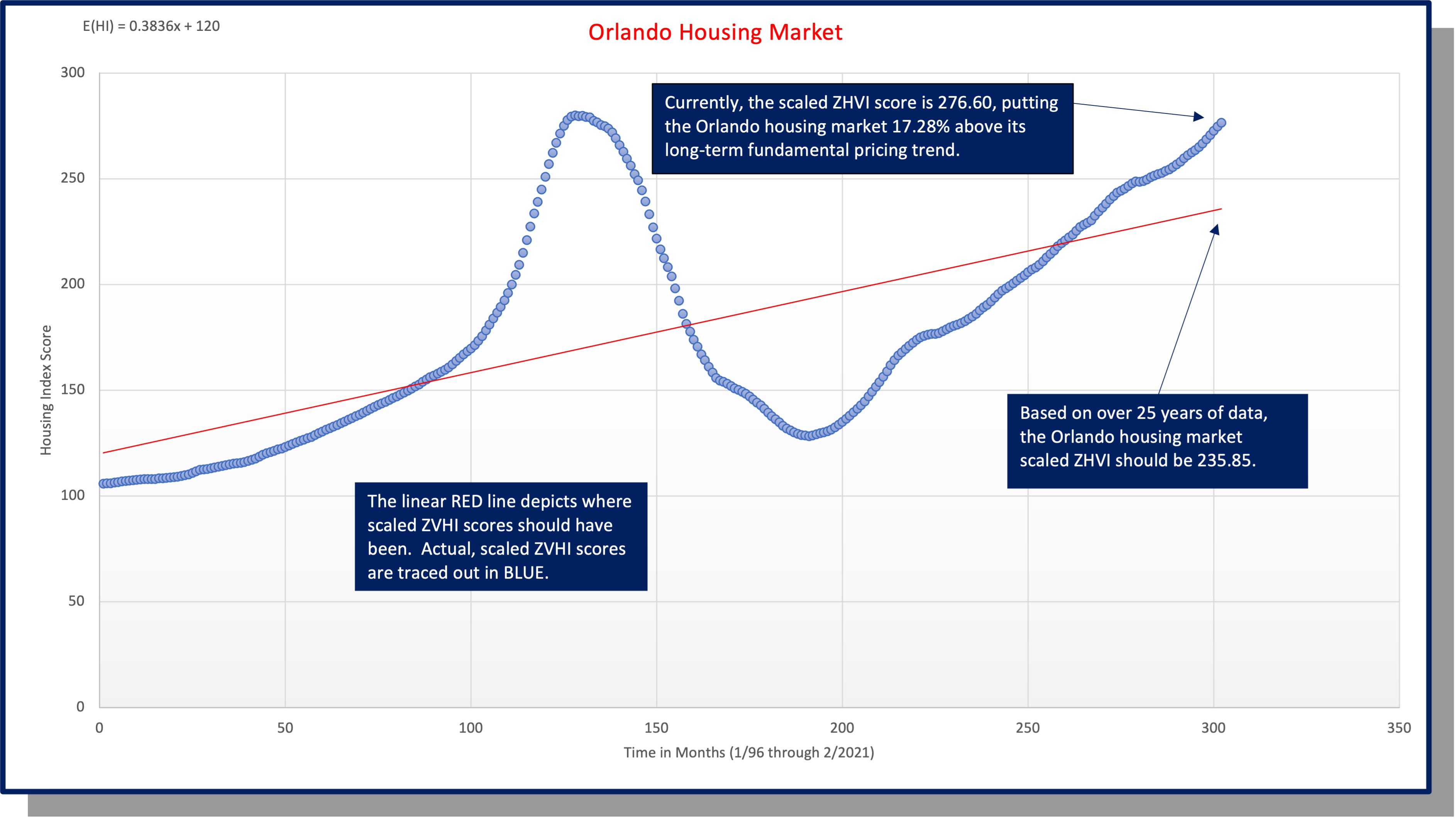Metro Orlando Homes Overvalued by More Than 17 Percent
By Paul Owers | 04/06/2021
Tags: Press-Releases | Real-EstateCategories: Research | Initiatives
FAU Economist: Prices Unlikely to Collapse, but Buyers Must be Careful

House hunters in metropolitan Orlando are facing a decidedly seller’s market, with the average property overvalued by more than 17 percent, according to a researcher at Florida Atlantic University.
Single-family homes, condominiums, townhomes and co-ops are 17.28 percent above their long-term fundamental linear pricing trend, said Ken. H. Johnson, Ph.D., a real estate economist and associate dean in FAU’s College of Business. While the current climate puts prospective buyers at a disadvantage, the degree of overpricing now remains far below the 65 percent from the peak of the last housing craze in 2006.
“Orlando housing prices have some significant underpinning, making them less likely to fall in the near term,” Johnson said. “With near-record-low interest rates, a shortage of inventory and strong demand from out-of-state buyers, prices should remain elevated for some time. I don’t think buyers today need to worry about prices cratering like they did more than a decade ago.”
Still, consumers need to be mindful of the robust market, Johnson warns. Bidding wars are common, but buyers should resist getting caught up in the hype and offering more than they’re comfortable spending.
“It’s OK to walk away from a negotiation,” Johnson said. “There will always be another house. This is just part of the due diligence and purchasing process in the post-pandemic housing market.”

The Orlando housing market includes the Orlando-Kissimmee-Sanford metropolitan service area (MSA), as defined by the U.S. Census Bureau. The Orlando MSA is the nation’s 23rd largest, with about 2.6 million residents.
Johnson analyzed publicly available data from Zillow, the online real estate portal. He previously collected home price figures from the Federal Housing Finance Agency (FHFA), which compiled transactions on a quarterly basis. But that came with a two-month lag and included sales at the lower and higher ends of the market, skewing the data and making it difficult to determine long-term pricing trends.
The Zillow Home Value Index (ZVHI) allows for monthly analysis with a three-week lag and includes sales only in the 35th to 65th percentile range, which offers a more accurate estimate of local housing trends, Johnson said.
Johnson regularly analyzes housing markets in Florida and across the country and also is a co-author of the Beracha, Hardin & Johnson Buy vs. Rent Index. The quarterly housing analysis of 23 key metropolitan areas determines whether consumers will create wealth faster by buying a home and building equity or renting the same property and reinvesting the money they would otherwise have spent on ownership.
-FAU-